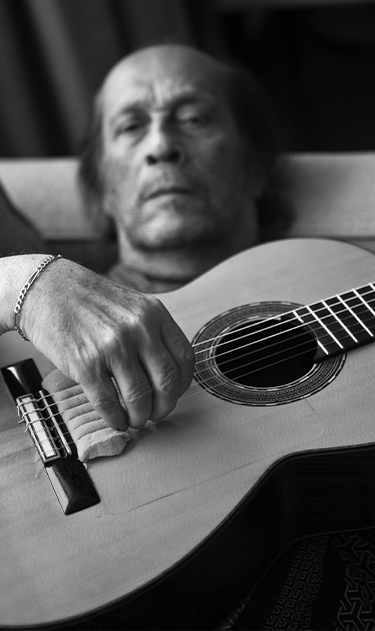When Paco de Lucía included La Barrosa in his emblematic album Siroco (Universal, 1987), his musical background had already passed through a long stage of learning based on Niño Ricardo’s falsetas, his admiration for Sabicas, his nurturing stage with “Camarón de la Isla”, his flamenco assimilation of jazz, and the virtuosity of his magical sextet.
A statue on the Bulevar de la Música in Chiclana de la Frontera will partly settle our debt to this musician, who dedicated one of his most emblematic compositions to La Barrosa. However, this won’t be the first tribute paid in the municipality to this musician from Algeciras. In February 2021, the name Paco de Lucía was given to the central gallery of the Huerta del Rosario high school.
Siroco is an album of maturity, with an irrefutable eminence in the world of flamenco; one in which the taste for tradition intersects with an equally genuine will to innovate, using no other artifice beyond his prodigious art, accompanied on this occasion by Rubem Dantas, Juan Ramírez, José María Banderas, Ramón de Algeciras and Pepe de Lucía.
To explain why the alegrías on this album bear the name of La Barrosa— an express tribute to Chiclana de la Frontera’s long, wide beach — several points must be taken into account. Firstly, Paco de Lucía had a taste for place names when titling his pieces, mostly from the area near Gibraltar, but also from other localities. It is therefore not surprising that he chose Chiclana’s beach to identify his alegrías de Cádiz — it is a place that is also part of his sentimental memory, whether due to his relationship with San Fernando through Camarón de la Isla or his former wife, Casilda Varela.
However, there is another nuance to take into account — it is about a beach, and his work includes numerous beach references, including Punta Umbría (Huelva) and Playa del Carmen. The latter presents an almost prophetic lyric, since the guitarist, born in the coastal Algeciras in 1947, was to meet his death near this beach in Mexico’s Yucatán in 2014:
When I think that
I have to die
I throw a blanket on the floor
And I go to sleep
For Paco de Lucía, all the beaches in the world were one: El Rinconcillo, in Algeciras, the beach of his childhood, the one he was searching for during his travels around the world. For him, the beach was the territory of affection and freedom, as is the beach of La Barrosa, especially if we consider that Chiclana de la Frontera is part of the flamenco geography of the Bay of Cadiz and is the hometown of Alonso Núñez ‘Rancapino’, Camarón’s friend as a youth.
La Barrosa was played by Paco in the key of B major with the capo placed on the second fret. After it was recorded, it become part of his regular repertoire. It is, in the words of Eric Clapton and Richard Chapman, a composition “full of effortless delicacy and cascading phrases”.
In the words of Felix Grande: “I have never heard a guitar like this, not even in the hands of Paco De Lucia himself”.
